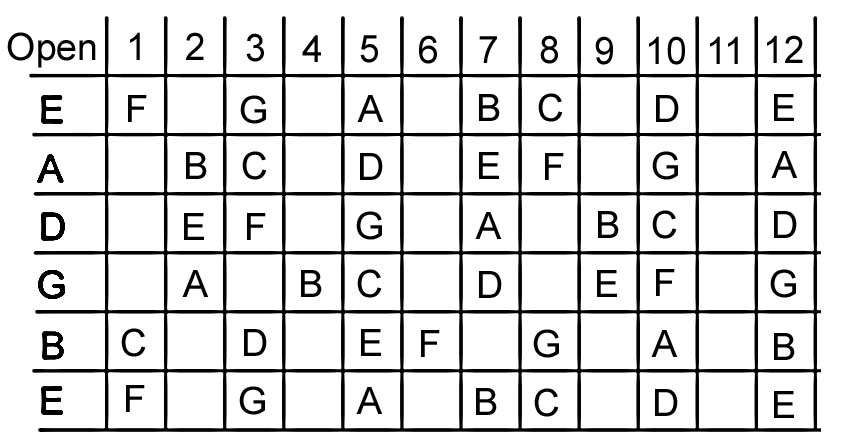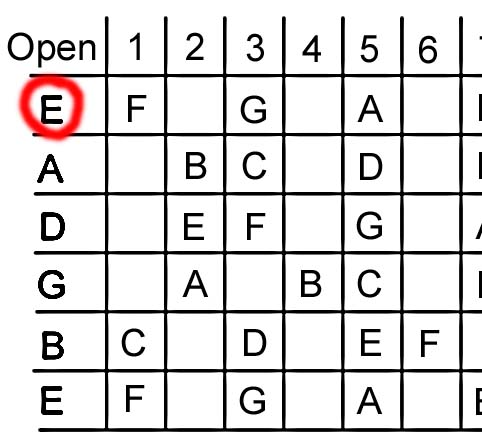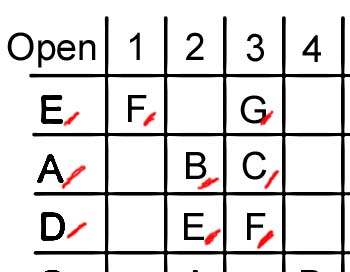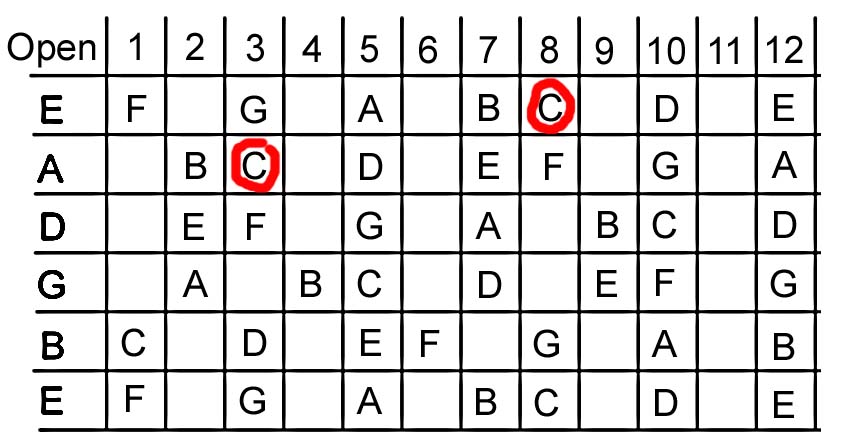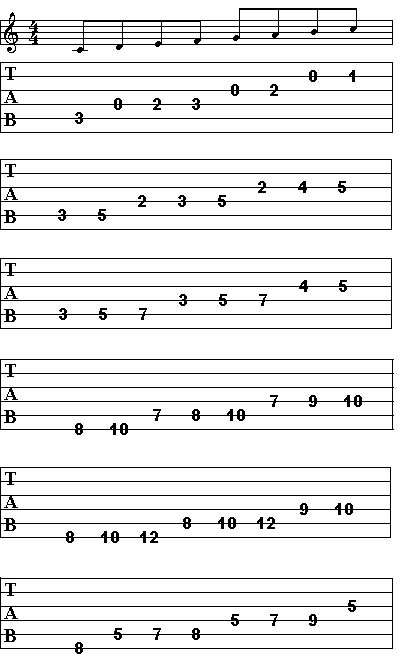This guitar lesson is a companion or can be seen as an alternative to a previous lesson that was writtem for this site.
That lesson can be found here – click
The following free guitar lesson will if followed closely give you a better understanding of the guitar and of music as well.
Take a look at the following grid: The numbers across the top indicate the fret, the letters going indicate the note.
The notes above give us all the notes from the ‘Key of C’.
To help learn the notes better we are going to use somthing called modes.
What modes are and what they mean is not important for this lesson, we’re just going to use their concept to create exercises that will help us learn the notes.
MODES:
C D E F G A B C = Ionian (Major)
D E F G A B C D = Dorian
E F G A B C D E = Phygian
F G A B C D E F = Lydian
G A B C D E F G = Mixolydian
A B C D E F G A = Aeolian (Natural Minor)
B C D E F G A B = Locrian
So let’s get started with our first exercise,
Finding the lowest note on the guitar the ‘E’ – Open E string indicated below.
Using the Phrygian Mode we are going to play the notes E A B C D E F G as a scale.
The notes we will play have red ticks next to them.
In TAB format this would read:
Written on the stave:
——————————————————————————
If you’ve understood so far we can move on to really testing ourselves.
Try the next 2 exercises yourself, answers will be at the bottom.
Exercise 1. Work out Phrygian, Lydian, Mixolydian, Aeolian, Locrian, Ionian and Dorian starting each scale on the ‘E’ String and playing 1 octave only to finish on ‘D’ String
Exercis 2. Work out 5 different ways to play the ‘C’ major scale from middle ‘C’
Circled in red middle ‘C’ – there are two.
Answers:
Exercise 1:
Phygian: E F GA B C D E
Exercise 2:
 Below are 6 different positions – if you’ve got 5 bravo, if you’ve got all 6 you are definitely on your way.
Below are 6 different positions – if you’ve got 5 bravo, if you’ve got all 6 you are definitely on your way.
If you didn’t get at least 5 take a look at the ones you missed and then look back at the grid to get yourself familiar.
It’s good practice to say the notes as you play through and try and find the notes in relation to the grid.
Those with good ears will recognise the scales sound and try to root out the notes by ear.
This is invaluable but can work against you, whilst being able to recognise the scale use it only tog hear when you’ve played the scale wrong and not to find the notes.
————————————————————-
Further exercises: These exercises will not have answers, if you’re confident of after the previous exercises then try the following to cement and test what you already know.
Exercise 1. Try each mode in the same way as above – find three variations of each of the following modes, Aeolian, Dorian and Locrian.
Exercise 2. Try finding modes staring on a different string.
Exercise 3. Remove the notes that do not appear in the pentatonic scale – these notes are F & B this exercise can be applied to Aeolian, Ionian, Phrygian, Mixolydian and Dorian modes.
—————————————————
Finally take your time to learn the notes rather than patterns. Play evenly, try using a metronome and use alternate picking.
Also take care with your fingers positions.

